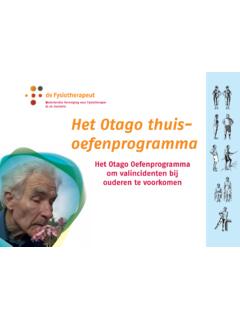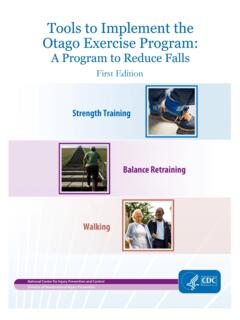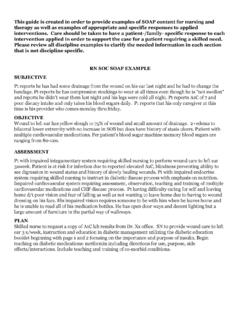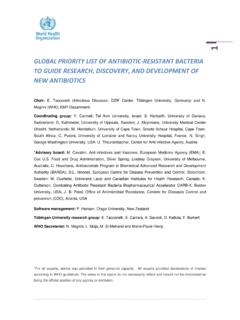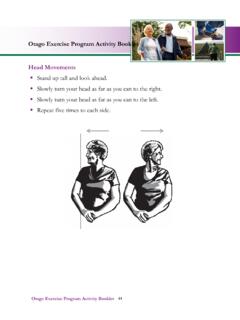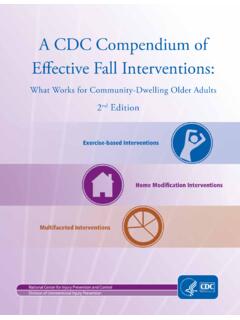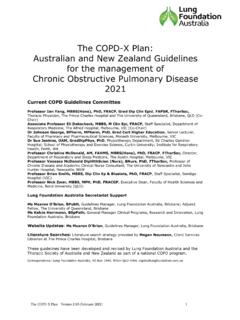Transcription of Wider impacts of COVID-19 on physical activity ...
1 Wider impacts of COVID-19 on physical activity , deconditioning and falls in older adultsWider impacts of COVID-19 on physical activity , deconditioning and falls in older adults 2 Contents Executive summary .. 9 Key findings .. 10 Key recommendations .. 10 Introduction .. 12 The older adult population .. 12 The Wider impacts of COVID-19 on older adults .. 12 Reduced physical activity and deconditioning .. 14 Study objectives .. 19 Modelling the impact of reduced physical activity on falls .. 20 Data sources .. 21 activity levels.
2 22 Baseline number of people who fall and falls .. 23 Impact of activity levels on fallers and falls .. 24 Number of fallers and falls by activity level .. 26 Care pathway and costs following a fall event .. 26 Results 28 Results .. 30 Impact on physical activity .. 30 Impact on the number of fallers and falls .. 37 Impact on the health and social care system .. 41 impacts of a hypothetical scenario to improve activity levels .. 42 Discussion .. 48 Key findings .. 48 Relationship to existing evidence and implications for policy.
3 48 Limitations and future improvements .. 54 Recommendations for addressing deconditioning .. 58 Methodology .. 58 Recommendations for addressing deconditioning in the context of COVID-19 .. 58 Whole population recommendations .. 61 Targeted recommendations .. 64 Appendix A: Regional change in strength and balance .. 66 References .. 67 Wider impacts of COVID-19 on physical activity , deconditioning and falls in older adults 3 List of figures Figure 1. Data extracted from the WICH Tool showing the percentage of adults doing more or less physical activity than usual by age group pooled survey wave from 3 April 2020 to 11 May 2020 [10].
4 14 Figure 2. Percentage of adults doing more or less muscle strengthening activity than usual by age group pooled survey wave to 22 June 2020 [10] .. 15 Figure 3. Percentage of adults doing at least 30 mins physical activity on 0 or 5 or more days in the last week by age group pooled survey wave from 3 April 2020 to 3 August 2020 [10] .. 15 Figure 4. Summary of the modelling methodologies which were used to assess the Wider impacts of COVID-19 on older adults in terms of strength and balance activity , the rate of falls and associated costs.
5 20 Figure 5. Summary of the care pathways in terms of the percentage of individuals who experience a serious fall, require each service and their respective service location following a fall event taken from the PHE Falls Prevention ROI Tool [3] .. 27 Figure 6. Percentage of older adult population (greater than or equal to 65 years) undertaking a given level of moderate activity in 2019 (red) and 2020 (green), for females (left graph) and males (right graph), extracted from ALS [19] .. 32 Figure 7. Percentage of older adults (aged greater than or equal to 65 years) undertaking a given level of moderate activity in 2019 (red) and 2020 (green), by IMD quartile (least deprived in the top left, second least deprived in the top right, second most deprived in the bottom left and most deprived in the bottom right), extracted from ALS [19].
6 33 Figure 8. Percentage point change in the weekly duration of strength and balance activity undertaken by age groups, for males, extracted from ALS [19] .. 36 Figure 9. Percentage point change in the weekly duration of strength and balance activity undertaken by age group, for females extracted from ALS [19] .. 37 Figure 10. Projected change in the annual number of people who experience at least one fall due to the COVID-19 pandemic .. 38 Figure 11. Projected percentage change in the annual number of fallers due to the COVID-19 pandemic, by age group and sex, females (red) and males (green).
7 39 Figure 12. Projected change in the annual number of falls due to the COVID-19 pandemic, by age group and sex, females (red) and males (green) .. 40 Figure 13. Projected percentage change in the annual number of falls due to the COVID-19 pandemic, by age group and sex, females (red) and males (green) .. 41 Wider impacts of COVID-19 on physical activity , deconditioning and falls in older adults 4 Figure 14. Projected change in the annual number of people who experience at least one fall if strength and balance activity increased by 10% from 2020 levels, by age group and sex, females (red) and males (green).
8 43 Figure 15. Projected percentage change in the annual number of people who have at least one fall, if strength and balance activity levels increased by 10% from 2020 levels, by age group and sex, females (red) and males (green) .. 44 Figure 16. Projected change in the annual number of falls if activity strength and balance activity increased by 10%, by age group and sex, females (red) and males (green) .. 45 Figure 17. Projected percentage change in the annual number of falls if activity increased by 10%, by age group and sex, females (red) and males (green).
9 46 Figure 18. Monthly trend in hospital admissions for hip fractures in 2018 to 2019 (baseline average, green) and 2020 (red) for all older adults (65years and over), 65 to 79 year-olds and over 80-year-olds, sourced from the PHE WICH tool [10] .. 51 Figure 19. Monthly trend in hospital admissions for falls in 2018 to 2019 (baseline average, green) and 2020 (red) for all older adults (65 years and over), 65 to 79 year olds and over 80 year olds, sourced from the PHE WICH tool [10] .. 52 Figure 20. Proportion of older adult population (greater than or equal to 65 years) undertaking a given level of strength and balance activity in 2019 (red) and 2020 (green) by region, extracted from ALS [19].
10 66 Wider impacts of COVID-19 on physical activity , deconditioning and falls in older adults 5 List of tables Data source summary table .. 21 Summary of the demographic variables from ALS which were used to disaggregate model results and their justication for inclusion .. 22 Percentage of individuals who report experiencing at least one fall in a 12-month period by age and sex HSE 2005 via POPPI [30] .. 24 Summary of the meta-regression results in terms of the impact of additional activity on the falls rate, fallers rate and the average falls per faller.










